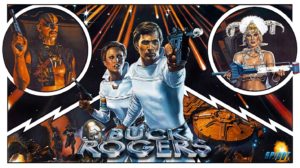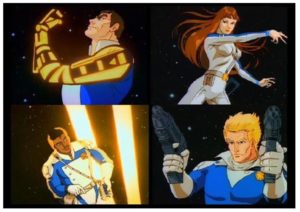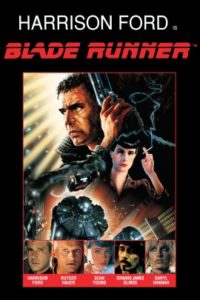A guest post by R.R. Virdi
November 15th 2016 marked the fifteen year anniversary of science fiction masterpiece that impacted an entire generation. I’m talking about Halo: Combat Evolved. Debuting in 2001 on Microsoft’s gaming console Xbox, Halo brought first person shooters to the mainstream.
Lifelong gamers will note that Halo didn’t revolutionize the shooter genre. In fact, much of what it gave us had already been done by the James Bond gaming adaptation Goldeneye. Multiplayer matches over multitier levels in the first person shooter style. Halo dialed it to eleven. It introduced vehicular warfare, objective based game types such as: Capture the Flag, and Assault.
It’s greatest impact however? Major League Gaming. The professional esports organization sprung to life in 2002 and exploded with Halo’s successor, Halo 2. But it was the first game that laid the groundwork.
Halo’s well-made and addictive multiplayer matches reached the point where a national competition was held in the United States for the best player. Something that would lead to video games foraying onto a stage reserved for professional athletics and the like. This was the start of the Halo Empire.
After its resounding success, developer, Bungie, and parent corporation, Microsoft Studios hit the ground running on producing a still-continuing series of novel adaptations to expand on the game’s world.
The same year of Halo’s release on console would be when Halo: The Fall of Reach landed on bookshelves. It wasn’t the first novel based off of a video game, but it would be the first of what’s still considered arguably the best literary adaptations of a video game, as well as the longest running. The Fall of Reach gave gamers what they wanted and in the best fashion.
A backstory.
Halo: Combat Evolved gave us the Master Chief, a super-soldier raised from birth and enhanced to become humanity’s vanguard against an alien threat. Or so we thought. The prequel novel answered all of the questions we had about his origins without requiring developers to make a new game or dump resources into adding a backstory that could bog down a title. It was well done and it showed. Fans wanted more.
Within the next two years, the Halo franchise released two more novels. An adaptation of the first game itself. One I know tore through and loved for the added details and interactions never seen during the gameplay. It was an Easter egg that built upon an already loved game and foundations. Then came the surprise.
Halo: First Strike. While fans were waiting on pins-and-needles for the sequel. A novel debuted that took place between the much-loved first game and, the one we couldn’t wait for. First Strike gave us a riveting story to excite Halo fans for more than just the visual games. It enraptured us in what had happened post Halo and leading up to Halo 2, setting the groundwork. You didn’t need to read it, but you’d be glad you did.
The developers and property holders had found a formula that worked. Adapt the game world into literature and build on what couldn’t be shown on console. And it worked—brilliantly. The Halo books have continued to release successfully since the series launch in 2001. Bungie may have parted ways with parent Microsoft, but, Halo has never stopped its rampant growth.
At some point, someone involved must have asked, “Why stop at books?” It was a good question.
October 5th 2012 Halo 4: Forward Unto Dawn the television mini-series aired. Halo fans had gotten what they had dreamed of. A silver-screen adaptation of the gaming icon they had grown up with. It was a test, and it had passed. The mini-series paved the way for another television adaptation by Ridley Scott, and, a still-in-the-works production by legendary director, Steven Spielberg.
Historically, it has been books that have been adapted into other mediums. Times change. Now, it’s apparent that whatever form your work debuts in, be ready with a plan to adapt it, because cross-platform is the way to go, and it works.
We’re at a point where authors are having their works turned into television series, movies, graphic novels, and it’s going the other way ‘round. Games are being turned into novels and they’ll need authors to do that. The artistic field is crossing boundaries and making it so experts in various forms can collaborate to build upon and bring a franchise into a new platforms.
This is a lesson that all creative types should pay attention to. We’re no longer bound to one medium. Our work, given the right push and effort, can take many shapes and create a powerful brand.
R.R. Virdi is the Dragon Award—nominated author of The Grave Report, a paranormal investigator series set in the great state of New York. He has worked in the automotive industry as a mechanic, retail, and in the custom gaming computer world. He’s an avid car nut with a special love for American classics.
The hardest challenge for him up to this point has been fooling most of society into believing he’s a completely sane member of the general public. There are rumors that he wanders the streets of his neighborhood in the dead of night dressed in a Jedi robe and teal fuzzy slippers, no one knows why. Other such rumors mention how he is a professional hair whisperer in his spare time. We don’t know what that is either.
Follow him on his website. http://rrvirdi.com/
Or twitter: @rrvirdi or https://twitter.com/rrvirdi






 I grew up on the Shannara books. I loved them. Oh, looking back I see them for what they were; Tolkien- ripoff hackery. They are not good books. But as a twelve-year-old just taking his first steps down this path, I loved them. And when I pick up those cliche tomes these days, I am still overcome with a sense of nostalgia.
I grew up on the Shannara books. I loved them. Oh, looking back I see them for what they were; Tolkien- ripoff hackery. They are not good books. But as a twelve-year-old just taking his first steps down this path, I loved them. And when I pick up those cliche tomes these days, I am still overcome with a sense of nostalgia. Why did I think this? Well, let’s start with this. This picture, just to the left here. You know what that is? That’s the original group of adventurers from the first Shannara novel. It’s a pretty racially diverse cast; you have a dwarf, a couple of Valemen, some humans, a druid, and two elves. Of course, they’re all white males, but still…diversity, right?
Why did I think this? Well, let’s start with this. This picture, just to the left here. You know what that is? That’s the original group of adventurers from the first Shannara novel. It’s a pretty racially diverse cast; you have a dwarf, a couple of Valemen, some humans, a druid, and two elves. Of course, they’re all white males, but still…diversity, right? Now, I knew MTV wasn’t about to put that cast up on the screen. I figured we’d see some gender-swapping, and some characters would end up being not-white. Which I was OK with, really. I am not someone who believes you can’t gender-swap a character. Obviously, there are series that have done this, and done it well.
Now, I knew MTV wasn’t about to put that cast up on the screen. I figured we’d see some gender-swapping, and some characters would end up being not-white. Which I was OK with, really. I am not someone who believes you can’t gender-swap a character. Obviously, there are series that have done this, and done it well. The Shannara Chronicles is simply written better than the original books.
The Shannara Chronicles is simply written better than the original books.